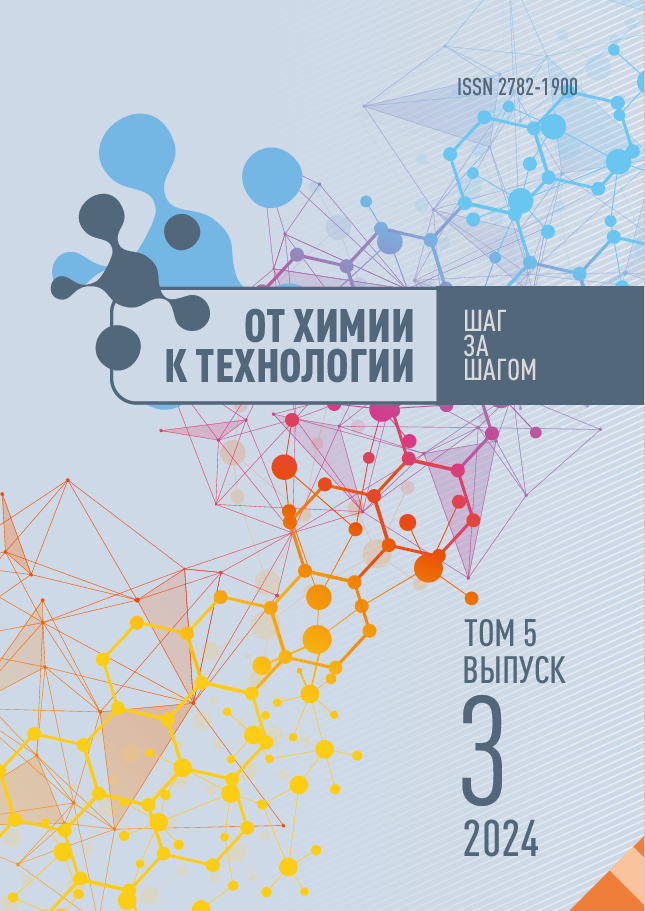Ivanovo, Ivanovo, Russian Federation
Ivanovo, Ivanovo, Russian Federation
Currently, acrylic sealants are widespread due to their environmentally friendly materials, ease of use, and low cost. Their compositions are constantly being improved. It allows ones to improve their quality and reduce the cost by selecting new substances for their manufacture. We obtained acrylic sealants with changing polymer base. The authors used acrylic and styrene acrylic dispersions obtained by emulsion polymerisation. The basis for sealants production is the mechanical mixing of the components and their further dispersion in the Dispermat VLOK dissolver. The main parameter to be determined is the vapour permeability resistance of the material layer. According to research results, the nature of the polymer base, degree of its bonding, type and amount of the filler used affected on vapour permeability of the sealing material. Moreover, increasing in film former temperature, viscosity, and pH causes increasing in tensile strength. By comparing the sealant samples on the basis of dry residue, we found increasing of the Shore hardness in samples with lower % index.
sealants, acrylic dispersions, vapour permeation resistance, properties
1. Klosowski, Jerome. Germetiki: sostav, svojstva, primenenie: spravochnik [Sealants: composition, properties, application: a reference book] / Jerome Klosowski, Andreas T. Wolf; English translation of the 2nd edition edited by O. A. Eliseev. Saint-Petersburg : Profession : TSOP ‘Professiya’. COP ‘Profession’, 2022. 583 p. (In Russian).
2. Ivashchenko Y.G., Fomina N.N., Ismagilov A.R. Analiz stirol-akrilovyh dispersij kak svyazuyushchih dlya krasok stroitel'nogo naznacheniya [Analysis of styrene-acrylic dispersions as binders for construction paints] // Vestnik BGTU im. V.G. Shuhova [Bulletin of V.G. Shukhov Belarusian State Technical University]. 2018. No. 1. Pp. 6-10. DOI:https://doi.org/10.12737/article_5a5dbd2d492241.03354026 (in Russian).
3. Akaeva T.K., Kozlov V.A. Himiya i tekhnologiya plenkoobrazuyushchih veshchestv: Laboratornyj praktikum. [Chemistry and technology of film-forming substances: Laboratory practice]. Ivanovo State Chemical-Technological University; Ivanovo, 2008. 100 p. (in Russian).
4. Kubal Michael T. Construction Waterproofing Handbook. USA. The McGraw-Hill Companies. 2008. 656 p.
5. Imamutdinov I.V., Galimzyanova R.Yu., Khakimullin Yu.N. Germetiki na osnove elastomerov [Elastomer-based sealants] // Vestnik tekhnologicheskogo universiteta [Bulletin of Technological University]. 2015. Vol. 18. No. 6. Pp. 69-74 (in Russian).
6. Aronovich D.A., Khamidulova Z.S., Muroh A.F. Sovremennye razrabotki NII polimerov v oblasti akrilovyh kleevyh materialov [Modern developments of the Research Institute of Polymers in the field of acrylic adhesive materials] // Novosti materialovedeniya. Nauka i tekhnika [News of Materials Science. Science and Technology]. 2016. No. 2(20). Pp. 64-71 (in Russian).
7. Müller B., Poth W. Lakokrasochnye materialy i pokrytiya. Principy sostavleniya receptur [Coatings and paints. Principles of compounding]. Moscow: Paint Media. 2007. 237 p. (in Russian)
8. Kuleznev V.N., Shershnev V.A. Khimiya i fizika polymerov [Chemistry and physics of polymers]. 2nd edition, rev. and suppl. Moscow : Kolos. 2007. 367 p. (In Russian).
9. DePompei Michael F., Hernandez Pamela K. (1991) Acrylic sealant composition and methods relating thereto, 5077360 US.
10. Ivanchev S.S., Kuchanov S.I., Lebedev A.V., Eliseeva V.I. Emul'sionnaya polimerizaciya i ee primenenie v promyshlennosti [Emulsion polymerisation and its application in industry]. Moscow : Khimiya [Chemistry]. 1976. 239 p. (In Russian).
11. Berlin A.A., Korolev G.V., Kefeli T.Y., Sivergin Y.M. Acrylic oligomers and materials based on them. Moscow : Khimiya [Chemistry]. 1983. 232 p. (In Russian).
12. Petrie Edward M. Handbook of adhesives and sealants. The McGraw-Hill Companies. 2020. p. 784.
13. Reitlinger S.A. Pronicaemost' polimernyh materialov [Permeability of polymeric materials]. Moscow : Khimiya Chemistry. 1974. 186 p. (In Russian).







